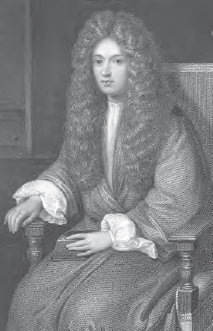Skeptical and Natural PhilosophyFrancis Bacon and the Scientific Revolution |
What was the Invisible College? |
In 1645 Robert Boyle (1627–1691) and other younger scientists met weekly over lunch to discuss current scientific news about research in England and Europe. They called themselves “The Invisible College.” They discussed the Copernican theory, William Harvey’s evidence for the closed circulation of blood, barometric experiments with mercury, and studies of magnetism. After England’s King Charles I was beheaded, this group and their friends, who had academic posts at Oxford, organized the Philosophical Society of Oxford.
Following a lecture on astronomy at Gresham College by Christopher Wren (1632–1723) in 1660, plans were made to found a college “for providing Physio-Mathematical learning.” Charles II approved their plans within a week. There were 115 original members. One third were scientists and the first president was Lord Brouncker, the leading mathematician of the day. This was The Royal Society of London for the Improvement of Natural Knowledge. It was presented with a silver mace by King Charles II at its inaugural meeting on July 15, 1662. It exists to this day, as an independent academy for scientific knowledge in the United Kingdom.

